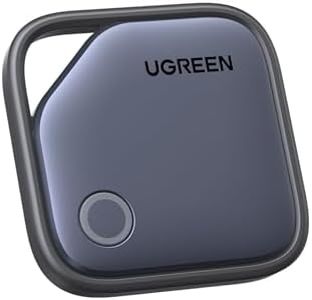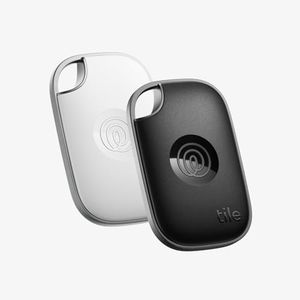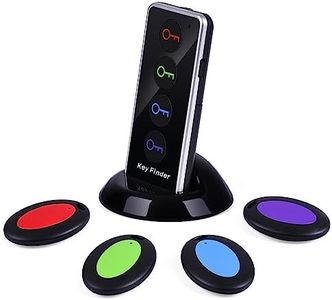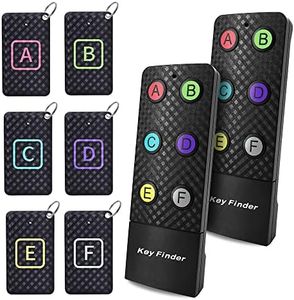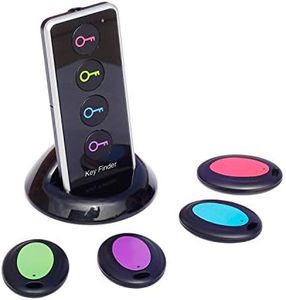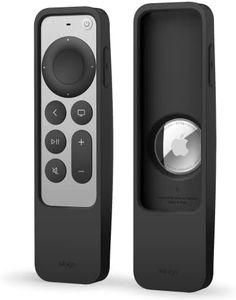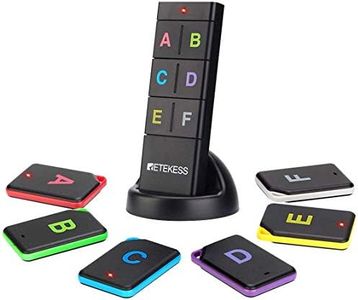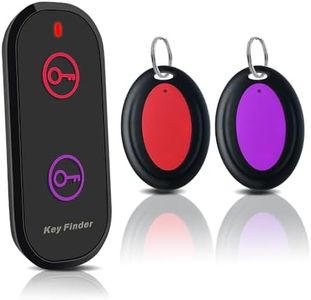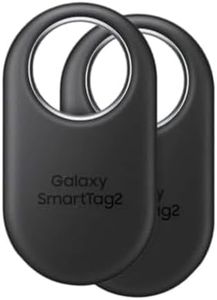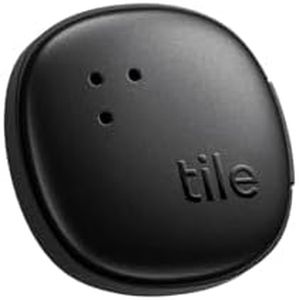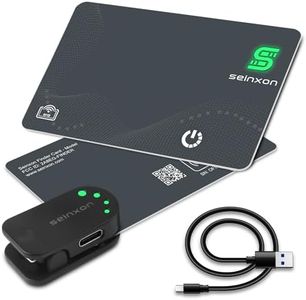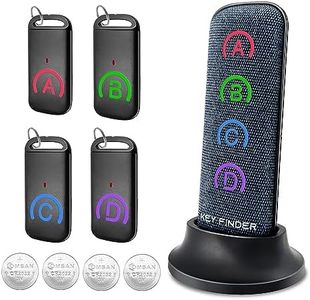We Use CookiesWe use cookies to enhance the security, performance,
functionality and for analytical and promotional activities. By continuing to browse this site you
are agreeing to our privacy policy
10 Best Remote Control Locators
From leading brands and best sellers available on the web.Buying Guide for the Best Remote Control Locators
Choosing a remote control locator can help you quickly find misplaced remotes and save a lot of frustration. When selecting the right one for your needs, think about where you'll use it, how many devices you need to track, and the type of household or environment you have. Key specifications can guide you in finding a good fit and ensure you won't be left searching under the sofa cushions again.RangeRange refers to how far the locator signal can travel between the transmitter (the device you use to find your remote) and the receiver (the piece attached to your remote). This is important because if you have a large home or often lose remotes far from where you usually are, you'll need a model with a greater range. Typical locators have short-range (under 30 feet), mid-range (30-80 feet), and long-range (over 80 feet). Choose short-range for small apartments, mid-range for most homes, and long-range for larger houses or if you might lose remotes outdoors or in garages.
Alert TypeThe alert type is how the locator lets you know where your remote is—commonly through sound, light, or vibration. This matters if you often lose things in quiet environments (sound is great), under cushions or at night (light is helpful), or if you need a subtle notification (vibration can help). Pick sound if you rely on hearing, light if you search in dark spaces, and look for models with both alerts for extra flexibility.
Number of ReceiversThe number of receivers tells you how many remotes or devices you can track with one set. Families with many remotes or multiple devices may want four or more receivers, while one or two could be enough for smaller households. Consider how many items you regularly lose and choose a locator set that covers all of them.
Power SourcePower source refers to how the locator transmitter and receivers are powered—usually by replaceable batteries or rechargeable ones. If you prefer less maintenance, rechargeable units can save hassle and waste. Alternatively, models using standard batteries are easy to find replacements for. Consider your willingness to recharge regularly versus simply swapping batteries when choosing.
Attachment MethodAttachment method is how you attach the receiver to your remote or other devices. Options include adhesive pads, keyrings, straps, or clips. Adhesive is quick and sticks to most flat surfaces, keyrings work for items with loops, and straps or clips are handy for odd shapes. Choose a method that works well with your remote’s shape and size to avoid the receiver falling off.
Ease of UseEase of use is about how simple the locator is to operate, set up, or reset. Some have color-coded or labeled buttons, others have apps or simple push-to-find buttons. If you're not tech-savvy or need something for kids or older adults, look for straightforward controls and minimal setup. Think about who in your home will use it most and their comfort level with gadgets.

